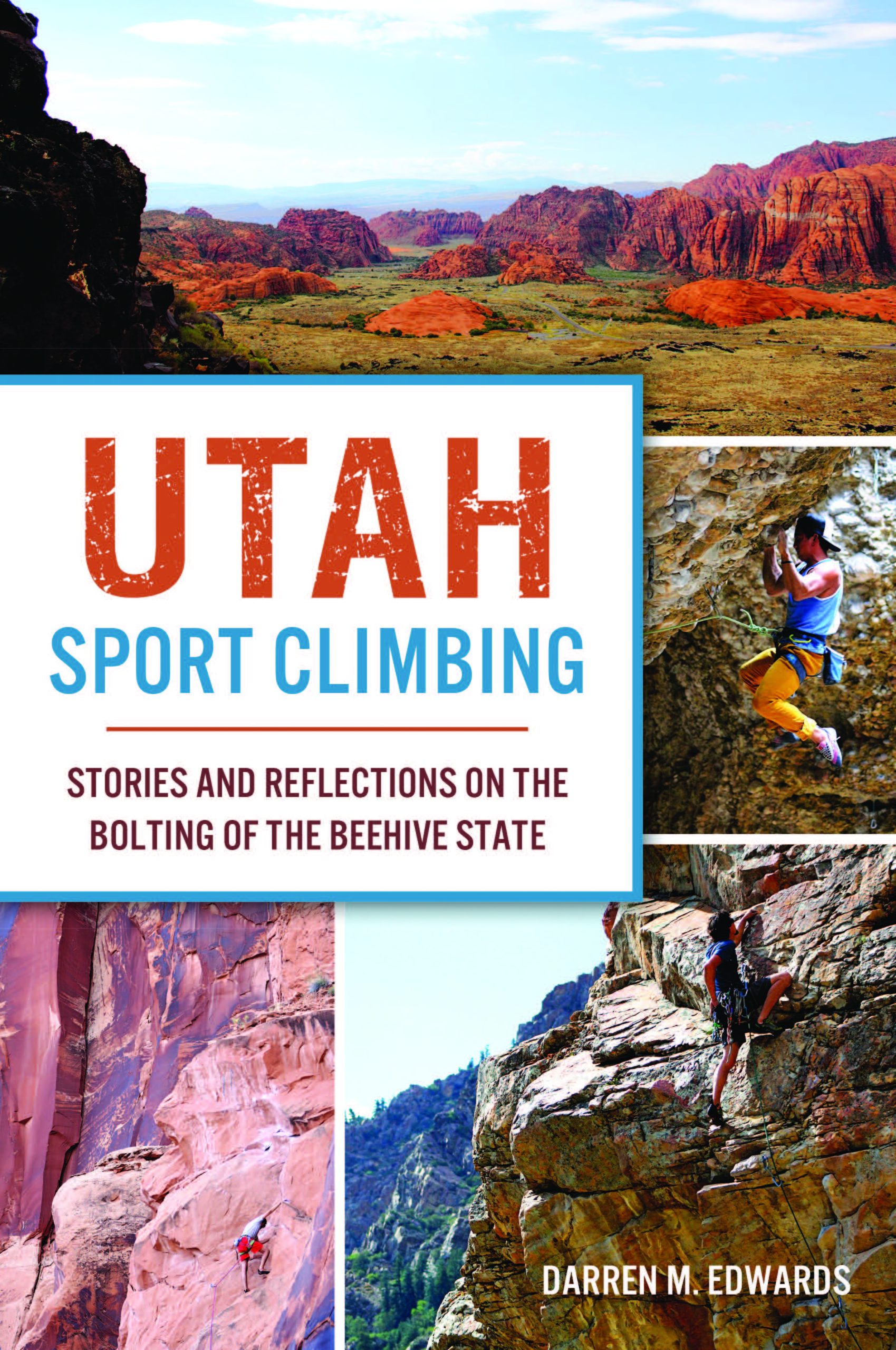Some information may be outdated.
If you have ever looked up at the magnificent rock faces and spires while driving in Grand County, you have probably noticed long ropes that support tiny moving dots (people) at death-defying heights.
Climbing is one of the most popular outdoor adventures that locals and tourists alike can have while in Moab. One of the most popular forms of climbing, sport climbing, is the focus of a new book by Darren Edwards, managing editor of the Southern Utah Independent in St. George.
“Utah Sport Climbing: Stories and Reflections on the Bolting of the Beehive State,” arrived in bookstores on Monday, March 27.
If you’ve ever known a climber, you know the sport can become an obsession.
“Climbing is about purely existing,” Edwards said. “When you’re climbing, you’re not in your own head, you’re not self-conscious and you are always in the present moment.”
People come to Moab from all over the world to feel this adrenaline rush. In his book, Edwards writes that Moab has “a distinct feel you can’t get anywhere else in the state.” He believes that Moab is a great place to climb because the climbs are “big, extreme and all ‘EPIC.’”
Local climber Molly Harrison says, “I feel lucky to live in a place where I’m able to walk out my front door and in mere minutes be at the base of climbs that people come from all over the country and the world to experience.”
Climbing in Southeastern Utah has a more drastic aesthetic than other parts of the state.
“There is something majestic about Moab’s intense exposures,” Edwards said. “You can be 80 feet up on a rock spire and it is just you and the rock and nothing else.”
Sport climbing is a form of rock climbing that relies on permanent anchors fixed to the rock for protection. This is in direct opposition to trad – or traditional – climbing, which relies on removable anchors and free-climbing techniques. Over the last few decades, there have been several heated conflicts in the world of climbing.
Edwards said, “Trad climbers are all about protecting tradition. Sport climbers want to do it our own way, and have a ‘don’t mess with our work’ mentality. It becomes a breeding ground for conflict.”
Another issue, he said, arises from local climbers’ having a sense of entitlement and ownership over their own crags when throngs of tourists invade during the spring and summer months. This territorial mentality, although common, is not always the case.
“At times it can be a little frustrating when you just want to climb in your own backyard and it’s flooded with tourists, but honestly it’s really great to see people sharing this beautiful space and to watch people try something new and genuinely have fun,” Edwards said.
As in any sport, there are certain ethical standards associated with sport climbing. For instance, if you are going to bolt a route, start from the ground and work your way up the rock. Edwards says that the most important rules are “no modifying the stone, no adding holds and no removing rocks.”
The only means of combating the bad rap sport climbers get from bolting into an otherwise pristine rock face is to follow community standards. Climbers visiting from other areas should always practice respectful climbing practices.
“Sport climbers need to be responsible as a community,” Edwards said. “Before climbing in a new area, climbers should learn about the history and ethics of that area.”
Sport climbing is dangerous, breathtaking, and can be the adventure of a lifetime.
Learn more about sport climbing by reading “Utah Sport Climbing: Stories and Reflections on the Bolting of the Beehive State,” out in stores now.
New book highlights Moab as a sport climber’s paradise
For more information, go to: www.arcadiapublishing.com/Products/9781467119092.
Climbing is about purely existing. When you’re climbing, you’re not in your own head, you’re not self-conscious and you are always in the present moment.
Appreciate the coverage? Help keep local news alive.
Chip in to support the Moab Sun News.





